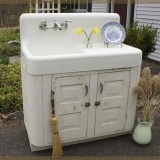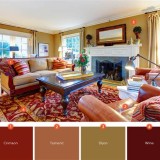Essential Aspects of Antique English Armoire
Antique English Armoires, with their grace and elegance, have stood as treasured heirlooms for centuries. Understanding their essential aspects sheds light on their craftsmanship, history, and significance. Let's delve into the key elements that define these exquisite pieces of furniture.
Construction and Materials:
Antique English Armoires exhibit meticulous craftsmanship using high-quality wood, such as oak, mahogany, or walnut. The sturdy construction features intricate joinery techniques, including dovetails, mortise and tenons, and tongue and groove. The exterior is often embellished with decorative carvings or inlay work, showcasing the artisan's skill.
Historical Significance:
English Armoires have a rich history that spans several centuries. They served as essential storage units in homes during the Tudor, Stuart, and Georgian periods. Their designs evolved over time, reflecting changing tastes and societal influences. From the grand armoires with heavily carved embellishments to the more refined and restrained pieces of the 18th century, each era left its mark on their design.
Types and Styles:
Antique English Armoires come in various types and styles, each with its distinct features. Court Cupboards, popular during the Tudor period, were elaborately carved and featured open shelves above enclosed cabinets. Linen Folds, prevalent in the Elizabethan era, were characterized by their decorative panels resembling folded linen. Press Cupboards, from the 17th century, had doors that opened to reveal shelves and drawers.
Decoration and Embellishments:
English Armoires are often adorned with exquisite carvings, moldings, and inlay work. The designs typically reflect the prevailing artistic styles of their time. Gothic motifs, Renaissance influences, and Rococo flourishes can be found on armoires from different periods. These decorative elements contribute to the overall beauty and value of the pieces.
Provenance and Authenticity:
The provenance of an antique English Armoire plays a vital role in determining its authenticity and value. Documenting the history of ownership, repairs, and restorations helps establish the piece's legitimacy. Original hardware, such as hinges, locks, and handles, adds to the authenticity and desirability of the armoire.
Maintenance and Preservation:
Antique English Armoires require proper care and maintenance to preserve their beauty and longevity. Regular cleaning, polishing, and humidity control are essential. Conservation and restoration techniques may be necessary to address any damage or deterioration over time. Proper care ensures that these cherished pieces can continue to grace homes and tell their stories for generations to come.
Conclusion:
The essential aspects of Antique English Armoires, from their construction and materials to their historical significance, types, and decorative features, contribute to their enduring appeal. Understanding these elements is crucial for collectors, historians, and anyone interested in appreciating the beauty and legacy of these timeless pieces of furniture.

Antique English Victorian Flame Mahogany Linen Press Wardrobe Israel

Outstanding Antique English Pine Armoire W Pocket Doors At 1stdibs Tv Armoires With Door

Armoires The Great British Pine Mine

Antique Wardrobe Armoire Mirror Door Maple Co Quality English Mahogany C1910 Mirrored

Antique English Two Door Linen Fold Oak Wardrobe Circa 1920

Furniture Guide Antique Wardrobe English Closet
Antique English Satin Walnut Armoire Wardrobe Compactum Circa 1880 Bloomsbury Fine Art Antiques

Antique English Tiger Oak Hall Wardrobe Or Armoire With Bun Feet No 7 Pickery Place

Antique English Satin Walnut Armoire Wardrobe Compactum Circa 1880 Bloomsbury Fine Art Antiques

Antique Armoires Vintage Wardrobes Fireside Antiques








